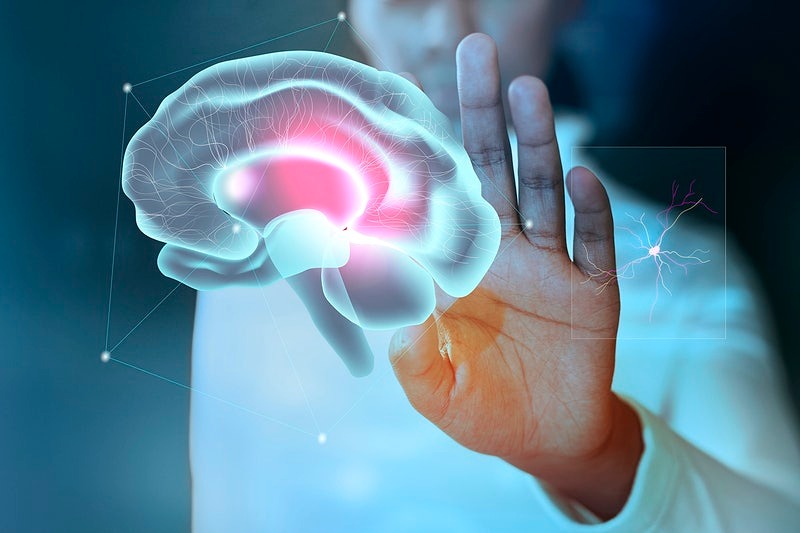Brainspotting is a term used to define an individual working through the mental process of their subconscious. This form of psychotherapy focuses on channeling physical locations of the brain’s cortex that relate to a traumatic experience. The goal of brainspotting is to alter the neurotic responses associated with traumatic memories.
Working with clients to be aware of the memories that trigger a trauma response and then using those past situations to alter the body’s natural reaction to them is the basis of brainspotting. This form of treatment is most commonly used to treat clients who have PTSD or another form of severe trauma. Traumatic events can come back into your thought process from minor triggers and can be hard to escape from when they present themselves. This form of therapy can be helpful in healthily managing those responses.
The History of Brainspotting
Eye movement desensitization and reprocessing (EMDR) is a common therapy practice used to treat trauma. This form of therapy focuses on the physical location of your eyes and what they are observing. Moving your eyes in different directions can bring back neurological patterns you experienced when the trauma initially occurred. Within the eight stages of this therapy, the client is advised to move their eyes from side to side. Focusing on the location and movements of your eyes can help trigger memories at specific points in the process. With further studies, brainspotting was developed based upon methods of this technique.
What Is Brainspotting Used For?
According to Brainspotting, “Brainspotting is effective for a wide variety of emotional and somatic conditions.” However, brainspotting is especially effective in treating trauma-based situations, helping clients identify and heal underlying trauma that contributes to substance abuse. Brainspotting gives a therapist access to both brain and body processes. This form of therapy aims to bypass conscious thinking to access the deeper emotional and body-based parts of the brain.
How Does Brainspotting Work?
Brainspotting is an advanced form of EMDR. It takes part in many of the same objectives but is focused on maintaining one location to focus your vision on. A “Brainspot” is the eye position related to the emotional activation of a traumatic event stored within the brain, most likely in the amygdala, the hippocampus, or the orbitofrontal cortex of the limbic system. A Brainspot is a physiological subsystem holding emotional experience in memory form.
The Brainspot can be accessed and stimulated by a client holding their eye position while focused on the bodily and sensory experience of trauma. Maintaining that eye position stimulates a deep healing process within the brain. This processing, which occurs at a reflexive or cellular level within the nervous system, helps initiate a de-conditioning of previously conditioned, maladaptive emotional and physiological responses. Brainspotting stimulates, focuses, and activates the body’s inherent capacity to heal itself from trauma.
The Benefits of Brainspotting
According to Brainspotting Indy’s article “Brainspotting vs. EMDR: A Comparison of Power Therapies,” brainspotting is shown to have faster and more accurate results than EMDR overall and is currently one of the most effective forms of treatment for post-traumatic stress disorder (PTSD). While it is a very effective form of treatment, it cannot be completed within one session. Brainspotting takes practice and repetition to achieve the positive outcome of this therapeutic form.
Brainspotting can take much less time to pinpoint an issue an individual is having trouble overcoming compared to typical talk therapy. Often, clients are unsure of the exact event that causes them emotional discomfort and pain. However, brainspotting can help channel the specific instance that caused a trauma response to occur. Participating in brainspotting is a form of learning about your mind and discovering how to manage your natural reaction to your thoughts.
The Effects on Trauma
Brainspotting helps clients discover a glimpse into their unconscious mind and view their unprocessed trauma responses in a safe and monitored manner. Through the process of “re-living” past traumatic events, clients can adjust their mental state to alter their natural emotional response to traumatic memories and triggers.
Sometimes, targeting these neurological responses can lead clients to feel as if they are experiencing the traumatic event all over again. Trauma work can cause discomfort, especially when a client is just beginning the process of trauma therapy like brainspotting. However, the results that come from targeting these responses and adapting thought processes can be extremely beneficial for handling trauma in the future.
The overall goal of brainspotting is not to eliminate the feelings associated with trauma but to change the way the body neurologically responds to it. When a client changes how they respond to trauma, coping with traumatic events and regaining focus on their future becomes a much easier task. Similar to many other forms of therapy, brainspotting will take time to accomplish positive results. However, it can help clients resolve future traumatic experiences they may have encountered and prevent them from feeling overwhelmed in a future crisis.
Brainspotting is a highly effective form of therapy to help clients deal with past traumatic events. This form of therapy works by isolating the part of your thought process that arises when processing a specific traumatic event. It allows you to view your past experiences and alter your physical response to mediate the emotions the trauma may bring. This makes coping with past traumas much more manageable when these memories arise in the future. If you are struggling with trauma and substance abuse, Dream Recovery is here to help. At Dream, we provide our clients the opportunity to participate in brainspotting to help them heal from their past and move forward in sobriety. Located in Costa Mesa, California, we want to help you every step of the way in your recovery journey. For more information about how brainspotting can heal trauma and help with your recovery, call Dream Recovery today at (949) 732-1960.


Recent Comments